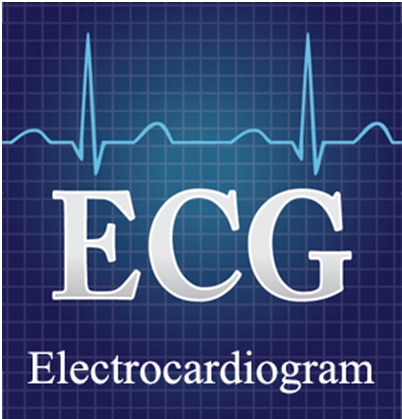ECG Full Form: Electrocardiogram

Demystifying the ECG Full Form
In the realm of medical diagnostics, few tools hold as much importance as the ECG. The acronym ECG stands for “Electrocardiogram,” a vital test that provides insights into the electrical activity of the heart. In this article, we will delve into the ECG full form and explore how this non-invasive procedure plays a pivotal role in assessing heart health and diagnosing cardiovascular conditions.
Decoding the Full Form: Electrocardiogram
The acronym ECG stands for “Electrocardiogram.” An electrocardiogram is a diagnostic test that records the electrical activity of the heart over some time. By measuring the heart’s electrical impulses, an ECG provides valuable information about the heart’s rhythm, rate, and any potential abnormalities.
The Birth of ECG Technology
The concept of recording the heart’s electrical activity dates back to the late 19th century. The first successful ECG recording was achieved by Willem Einthoven in the early 1900s, and his pioneering work earned him the Nobel Prize in Physiology or Medicine in 1924. Einthoven’s original equipment was far more cumbersome than the compact devices used today, but his breakthrough laid the foundation for modern ECG technology.
How ECG Works
An ECG records the heart’s electrical activity by using electrodes placed on the skin’s surface. Here’s a simplified breakdown of the process:
- Electrode Placement: Small metal electrodes are attached to specific points on the patient’s chest, arms, and legs. These electrodes are connected to the ECG machine.
- Electrical Impulses: The heart’s electrical activity triggers electrical impulses that travel through the heart’s muscles during each heartbeat.
- Electrode Sensing: The electrodes detect these electrical impulses and transmit them to the ECG machine.
- Recording and Visualization: The ECG machine amplifies and records the electrical signals, creating a visual representation of the heart’s electrical activity on a graph called an electrocardiogram.
Insights from an ECG
An ECG provides critical information about the heart’s function:
- Heart Rate and Rhythm: An ECG helps assess the heart rate (number of beats per minute) and rhythm (regularity of beats). Abnormalities can indicate conditions such as arrhythmias.
- Cardiac Abnormalities: ECG abnormalities can suggest heart conditions like atrial fibrillation, bradycardia, tachycardia, and other rhythm disorders.
- Heart Attack Detection: ECG changes can help diagnose myocardial infarction (heart attack) by identifying specific patterns in the heart’s electrical activity.
- Structural Abnormalities: An ECG may indicate structural issues such as enlarged heart chambers or thickened heart walls.
Clinical Application and Interpretation
ECGs are integral to diagnosing and monitoring heart conditions:
- Diagnosis: Doctors use ECGs to diagnose heart conditions, assess the severity of arrhythmias, and determine the need for further testing.
- Treatment Planning: ECG findings guide treatment decisions, such as prescribing medications or recommending interventions like pacemakers.
- Preoperative Assessment: ECGs help evaluate patients’ heart health before surgeries or medical procedures.
Conclusion
The ECG full form – Electrocardiogram – encapsulates a diagnostic tool that has transformed the field of cardiology. By recording the heart’s electrical activity, an ECG offers valuable insights into heart health, helping medical professionals diagnose conditions, plan treatments, and monitor patients’ progress. As technology continues to advance, the ECG remains a fundamental tool in safeguarding cardiovascular well-being and promoting heart health for individuals around the world.